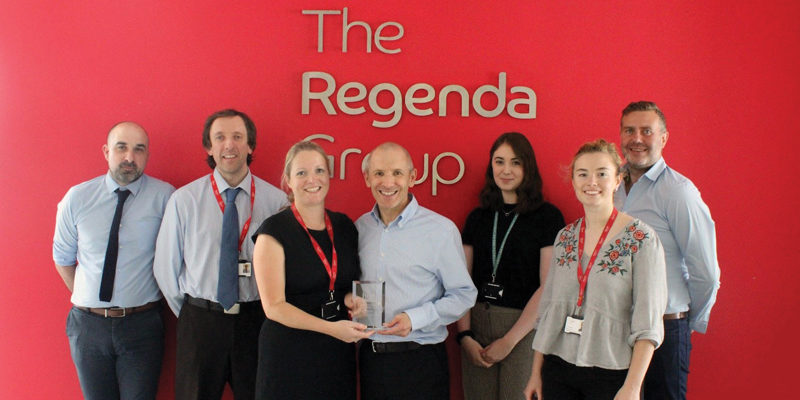At Regenda Group, we are working on the implementation of a large-scale digital strategy – led by our business transformation team, the project aims to improve services to tenants and internally between teams.
One version of the truth
One of the main aims of our strategy is to create ‘one version of the truth’ for data which is displayed in all performance and operational reporting across Regenda. This move will help us operate more efficiently as a business and ensure that all reports across the entire business are reporting from a single source of data.
To help us achieve our objectives, we bought a ‘data preparation’ platform, Data Academy from Insource, for our data warehouse. This low-code platform is mainly used in the NHS and the automotive industry to handle hundreds of millions of records and apply many processes and routines to assist in the data quality and transformation of data which it handles.
We have rigorously planned the implementation of our data preparation platform and data warehouse so now all the data in Regenda’s business applications will be consumed by the Data Academy platform, creating a single presentation layer in our data warehouse. This forms the basis of a ‘golden thread’ – once the presentation layer from our data warehouse is connected to our business intelligence platform, we can then begin delivering inspiring and exciting dashboards to the business.
Running in parallel to the Data Academy project is the implementation of our new business intelligence and performance management platform. Known as InPhase, the platform will deliver all performance and operational reporting across the group using information available from the Insource data warehouse. This creates massive business gains because any element of performance can be identified at any point in time from any part of the business. In the past, if financial information and operational information was needed in one report, it would be a huge effort to retrieve the data from multiple source systems; with this design, we have one report in one location, delivered by one solution.
To support our front-line teams, such as income management who manage our arrears process, we also want to harness data to help us deliver a better-informed service by deploying the right resources at the right times to the right locations. Our business transformation team is currently building predictive analytical dashboards for repairs and arrears management. The dashboards, which are being built in SSRS and Power-BI Pro, will use data from our data warehouse and also from IoT sensors in our properties.
The benefit of designing and implementing the data warehouse with data preparation tools which are then serving a performance management and reporting system is that it is agnostic, rather than specific, to the system or system version from which the data is being fed. The data warehouse processes are mapped to handle each individual system and apply business rules to the data to ensure it is ready for use.
It doesn’t matter what systems plug into the data warehouse as long as they are correctly mapped. This means that if any back-office systems change, you simply remap the data fields and continue to access quality data-driven reports. Ultimately, the data warehouse has given us full control of reporting and the assurance that teams across Regenda are accessing the same data.
Data quality
The information provided through our data warehouse will only ever be as good as the data that it is provided. Unfortunately, free-form inputs mean that human error can result in incorrect data being submitted.
In order to lower the risk of incorrect data being submitted, we’re building data-quality service libraries (DQSL) along with using SQL DQS services and cognitive learning services. We are also building data preparation processes in the Insource platform so that we have automated checks and alerts delivered to the data owners when a rule is breached. This allows the data owner to then amend the breach in the back-office system. This not only improves our data quality but ensures that the individual department or service has full ownership of its data rather than the report writer.
Innovative data driven solutions
The implementation of our data warehouse has also created opportunities to explore innovative data solutions for our assets team.
We recently won an HQN ‘housing innovators’ award for our digital solution to monitor boiler repairs and moisture levels. The award’s prize, from Amazon Web Services (AWS), has allowed to us to look at implementing and testing the ideas we have around IoT deployments in our properties. Data from the sensors would be sent back to our data warehouse, with any problems triggering an alert for the necessary department of any issues or changes in status in the property. Our maintenance and repairs teams could use the information to proactively carry out repairs and handle issues more efficiently and cost-effectively.
It isn’t just cost savings that could be achieved through proactive customer service. If we know what is needed for a repair call-out before entering the property, we can ensure that our operatives have the right tools and parts to complete the repair first-time around. And by linking the data provided by the sensors into our supply chain, parts can be ordered automatically when an appliance has reported a specific fault.
Innovative digital solutions are giving housing providers the opportunity to improve their data and reporting standards. At Regenda, we are working hard to be at the forefront of these changes because we believe managing our data, performance and reporting in this way will further our goal of regenerating places to create opportunities and improve our customers’ lives.
Craig Round is a business analyst at Regenda Group.


